Ge Ou
Automated Translation of Rebar Information from GPR Data into As-Built BIM: A Deep Learning-based Approach
Oct 28, 2021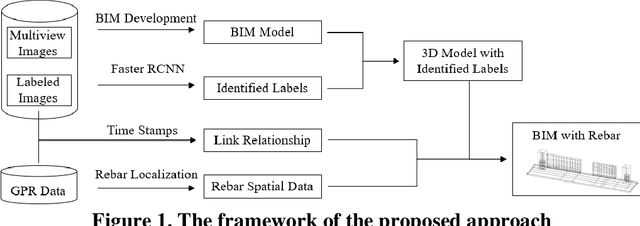
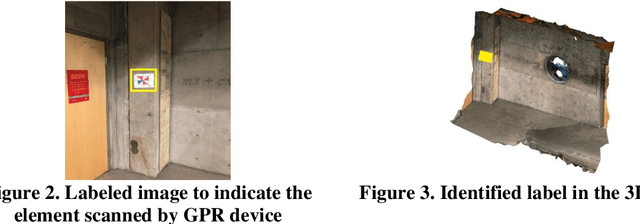
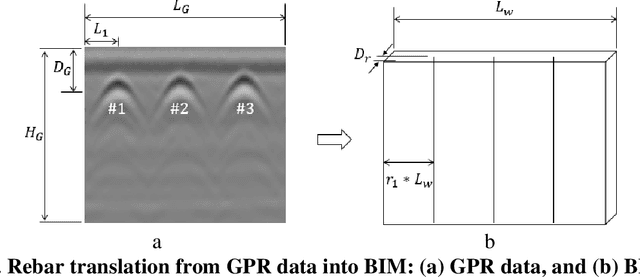
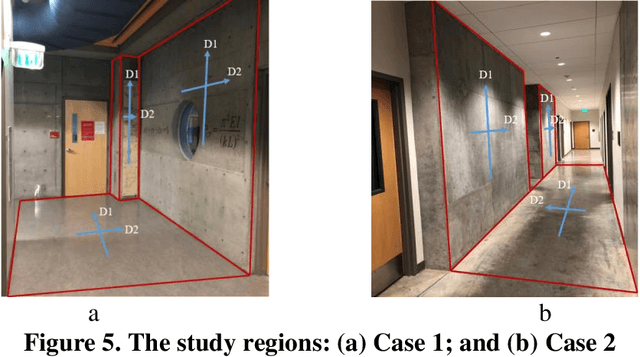
Abstract:Building Information Modeling (BIM) is increasingly used in the construction industry, but existing studies often ignore embedded rebars. Ground Penetrating Radar (GPR) provides a potential solution to develop as-built BIM with surface elements and rebars. However, automatically translating rebars from GPR into BIM is challenging since GPR cannot provide any information about the scanned element. Thus, we propose an approach to link GPR data and BIM according to Faster R-CNN. A label is attached to each element scanned by GPR for capturing the labeled images, which are used with other images to build a 3D model. Meanwhile, Faster R-CNN is introduced to identify the labels, and the projection relationship between images and the model is used to localize the scanned elements in the 3D model. Two concrete buildings is selected to evaluate the proposed approach, and the results reveal that our method could accurately translate the rebars from GPR data into corresponding elements in BIM with correct distributions.
Adaptive Local Kernels Formulation of Mutual Information with Application to Active Post-Seismic Building Damage Inference
May 24, 2021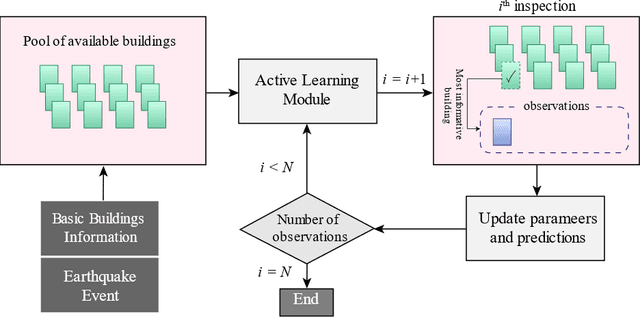



Abstract:The abundance of training data is not guaranteed in various supervised learning applications. One of these situations is the post-earthquake regional damage assessment of buildings. Querying the damage label of each building requires a thorough inspection by experts, and thus, is an expensive task. A practical approach is to sample the most informative buildings in a sequential learning scheme. Active learning methods recommend the most informative cases that are able to maximally reduce the generalization error. The information theoretic measure of mutual information (MI) is one of the most effective criteria to evaluate the effectiveness of the samples in a pool-based sample selection scenario. However, the computational complexity of the standard MI algorithm prevents the utilization of this method on large datasets. A local kernels strategy was proposed to reduce the computational costs, but the adaptability of the kernels to the observed labels was not considered in the original formulation of this strategy. In this article, an adaptive local kernels methodology is developed that allows for the conformability of the kernels to the observed output data while enhancing the computational complexity of the standard MI algorithm. The proposed algorithm is developed to work on a Gaussian process regression (GPR) framework, where the kernel hyperparameters are updated after each label query using the maximum likelihood estimation. In the sequential learning procedure, the updated hyperparameters can be used in the MI kernel matrices to improve the sample suggestion performance. The advantages are demonstrated on a simulation of the 2018 Anchorage, AK, earthquake. It is shown that while the proposed algorithm enables GPR to reach acceptable performance with fewer training data, the computational demands remain lower than the standard local kernels strategy.
An Innovative Approach to Determine Rebar Depth and Size by Comparing GPR Data with a Theoretical Database
May 19, 2020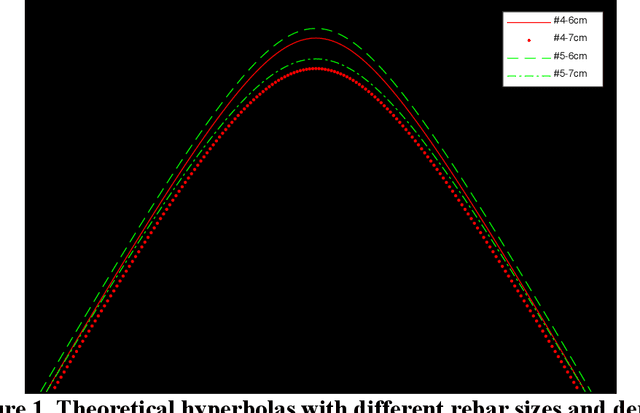

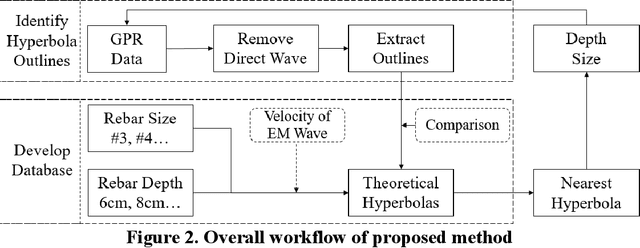

Abstract:Ground penetrating radar (GPR) is an efficient technique used for rapidly recognizing embedded rebar in concrete structures. However, due to the difficulty in extracting signals from GPR data and the intrinsic coupling between the rebar depth and size showing in the data, simultaneously determining rebar depth and size is challenging. This paper proposes an innovative algorithm to address this issue. First, the hyperbola signal from the GPR data is identified by direct wave removal, signal reconstruction and separation. Subsequently, a database is developed from a series of theoretical hyperbolas and then compared with the extracted hyperbola outlines. Finally, the rebar depth and size are determined by searching for the closest counterpart in the database. The obtained results are very promising and indicate that: (1) implementing the method presented in this paper can completely remove the direct wave noise from the GPR data, and can successfully extract the outlines from the interlaced hyperbolas; and (2) the proposed method can simultaneously determine the rebar depth and size with the accuracy of 100% and 95.11%, respectively.
e-Distance Weighted Support Vector Regression
Oct 27, 2016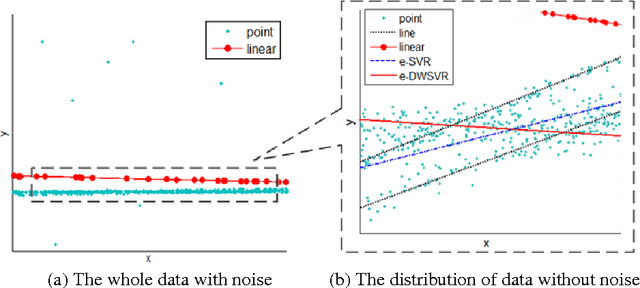
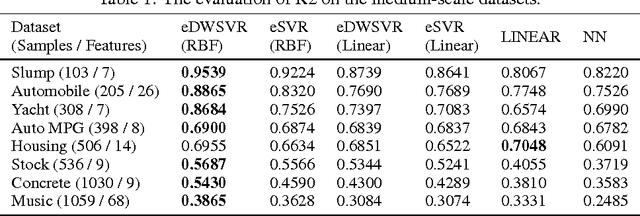
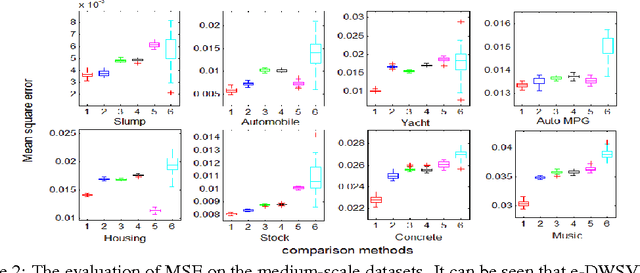
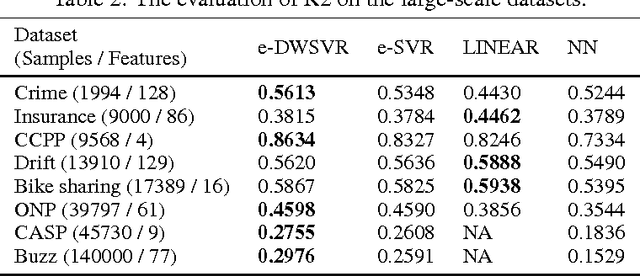
Abstract:We propose a novel support vector regression approach called e-Distance Weighted Support Vector Regression (e-DWSVR).e-DWSVR specifically addresses two challenging issues in support vector regression: first, the process of noisy data; second, how to deal with the situation when the distribution of boundary data is different from that of the overall data. The proposed e-DWSVR optimizes the minimum margin and the mean of functional margin simultaneously to tackle these two issues. In addition, we use both dual coordinate descent (CD) and averaged stochastic gradient descent (ASGD) strategies to make e-DWSVR scalable to large scale problems. We report promising results obtained by e-DWSVR in comparison with existing methods on several benchmark datasets.
 Add to Chrome
Add to Chrome Add to Firefox
Add to Firefox Add to Edge
Add to Edge